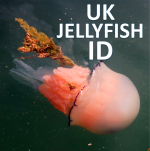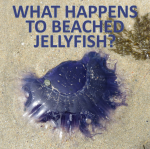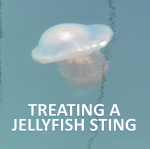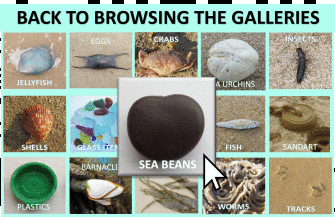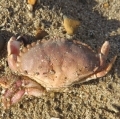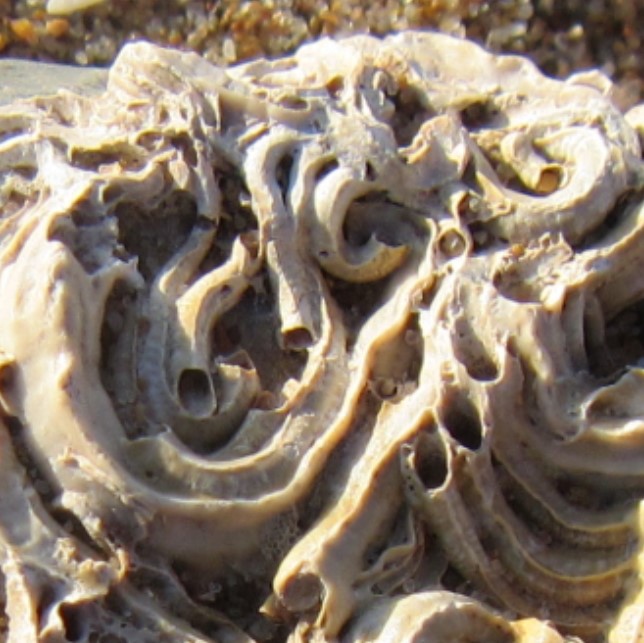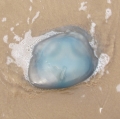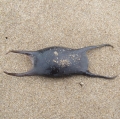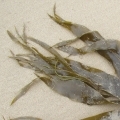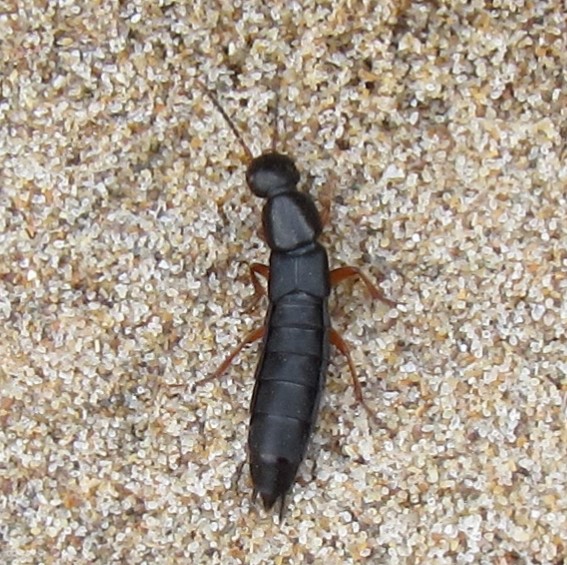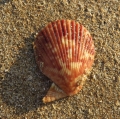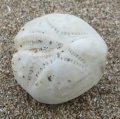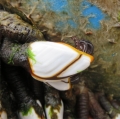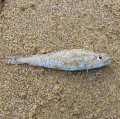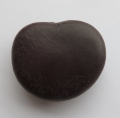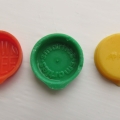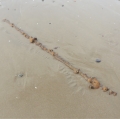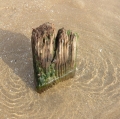

Which jellyfish sting?

Lately, there have been reports of thousands of jellyfish on the west coast of England and Wales - both on the beach and in the water.
Why do jellyfish strand on our beaches?
What we all need to know is, are these jellyfish going to sting us?

The truth is that all jellyfish sting, but not all of them have a sting that is strong enough to get through human skin so we hardly feel it, if at all.
Most of the jellyfish we encounter around the UK cannot cause us serious problems but there are a few that can. The moon jellyfish distinguishable by its four pink rings (above) is one of those generally thought to be harmless.
The compass jellyfish below (brown lines radiating from the centre), has long tentacles and can give you a painful sting.

Jellyfish sting as a way of catching their prey and also perhaps to discourage other creatures from eating the jellyfish. The sting is in the tentacles which can simply brush against you by accident.
The By-the-wind sailor and comb jelly below are not known to be stingers.


The big hitters
A fearsome stinger and definitely one to avoid is the Portuguese Man of War - below. It looks like a thin, odd-shaped ballon with blue tentacles. Fortunately, these are pretty rare on British coasts. The stings can be extremely painful and last some time. In some cases the effects can be serious. Seek medical advice immediately in case of a sting.

The Lion's Mane jellyfish (below) gives a very painful sting which warrants medical treatment.
As with Portuguese Man o' War the sting can remain active in the jellyfish even when it has been lying on the beach for some time.

The Mauve Stinger (pictured below), as the name suggests, can give a sting - some people say it is equivalent to a nettle stings, others feel it more painfully.
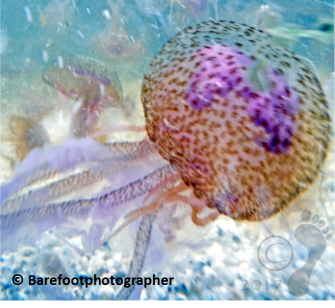

A mild sting to one person may be more serious in others
The blue jellyfish (above) is not generally thought of as having a bad sting, however, I have talked to people who are sure that they have received a nasty sting from it (more like a wasp sting than a mild nettle rash). And this is perhaps one of the problems with talking about jellyfish stings - some people experience them differently to others.
It is likely that people with thinner skin (children) may be more sensitive to stings than others. Damaged skin may also present vulnerability. It is also possible that some people are allergic to certain stings.

Keep your pants on!
And here's a word of warning about skinny dipping... a fisherman told me recently that at a certain of year, when the barrel jellyfish (above) are common in the waters in which he fishes, he has received some very unpleasant (although not lasting) stings from them in the delicate genital area. Barrel jellyfish, in ordinary circumstances, are not thought to have anything other than a very mild sting if any sting we can feel at all.
Don't panic!
Our big stingers, the Lion's Mane jellyfish, are not common, our stinging tropical visitors, the Portuguese Man o' War are rare, and our other jellyfish have mild stings, so serious problems from stings are few and far between.
However, the advice has to be to be very careful about touching any jellyfish - either in the sea or on the beach because it is not always easy to identify them and it is possible individuals can react differently to how we might expect.
For more on jellyfish:
Our guide to identifying UK jellyfish
Why do jellyfish strand on our beaches?
Any jellyfish stories you'd like to share?
We can add your photos and stories to this website.
Please email hello@beachstuff.uk


